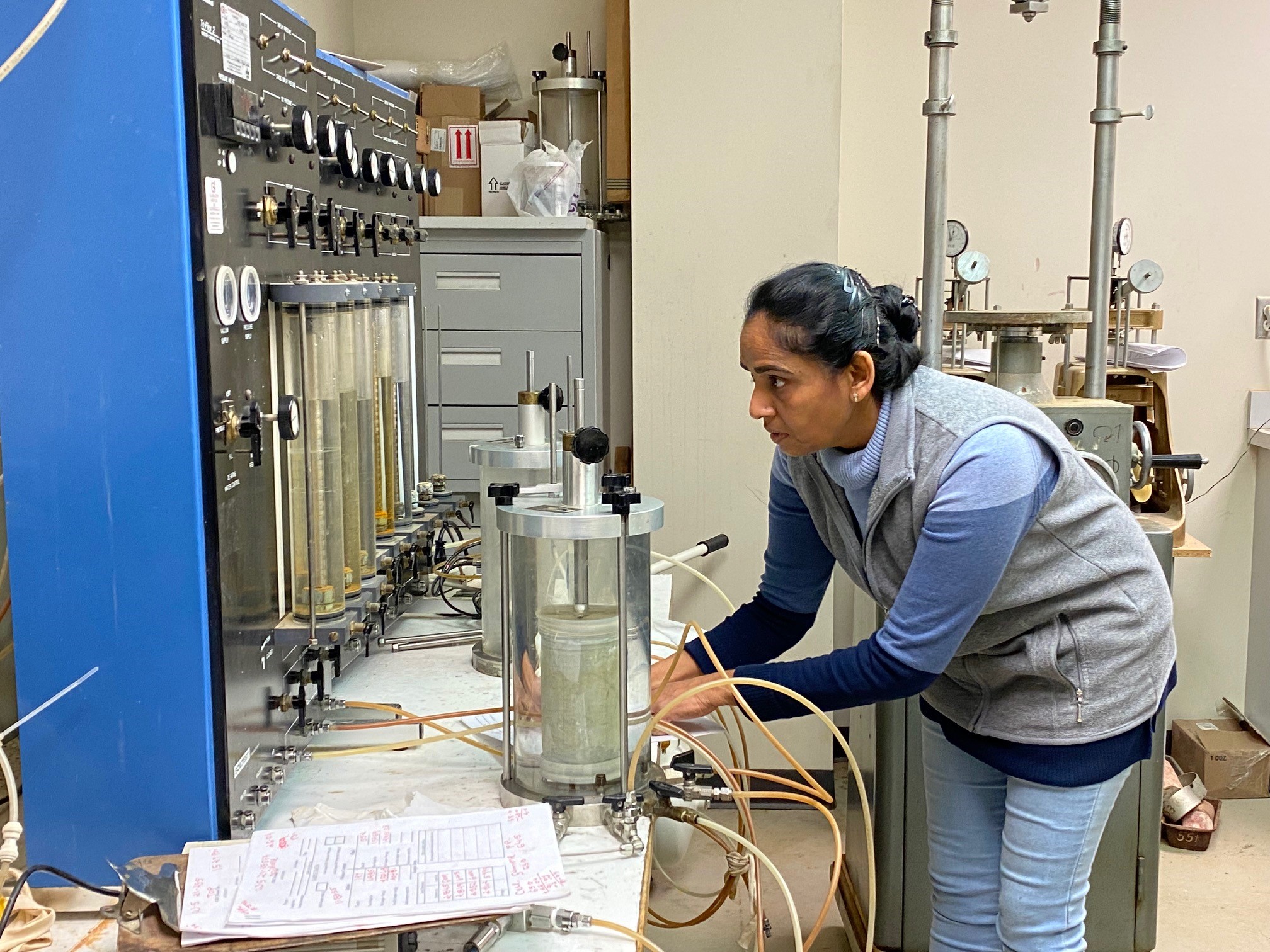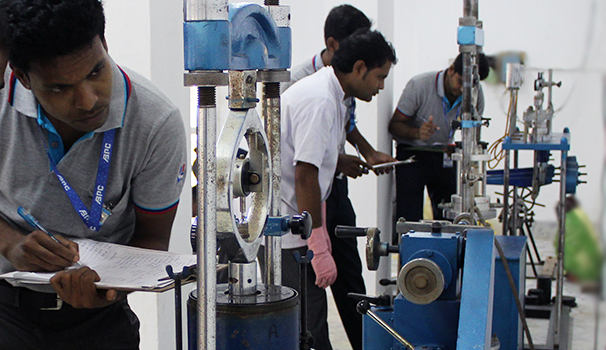Material Testing Lab Quality: Introducing the Secrets to Project Sturdiness
Material Testing Lab Quality: Introducing the Secrets to Project Sturdiness
Blog Article
Delving Into the Globe of Material Screening and Analysis
Material testing and evaluation plays a crucial function in numerous markets, from manufacturing to building. The tools made use of in material screening have progressed substantially, enabling scientists and designers to acquire a much deeper understanding of the products they work with.
Value of Product Testing
Product screening is a vital facet of the engineering and production markets, ensuring the quality, dependability, and safety and security of materials utilized in numerous applications. The significance of material screening can not be overemphasized, as it plays a critical duty in ensuring the efficiency and long life of structures and items.
Among the primary reasons for carrying out product screening is to assess the mechanical homes of materials. This consists of establishing their toughness, hardness, resilience, and elasticity. By subjecting products to different mechanical tests, engineers can accurately examine their viability for certain applications and guarantee they satisfy the needed requirements and specifications.
Another essential aspect of material screening is the identification of potential defects or flaws. By using non-destructive screening methods such as ultrasonic screening or visual evaluation, producers can spot any blemishes that can endanger the structural integrity or capability of the products. This helps in protecting against costly failings, mishaps, and possible obligations.
Furthermore, product screening also permits the evaluation of product habits under different ecological conditions. Variables such as temperature, humidity, and corrosive environments can substantially impact the efficiency and life expectancy of products. By subjecting them to ecological screening, engineers can analyze their resistance to such conditions and make educated decisions regarding their viability for certain applications.
Common Methods in Product Analysis
Various strategies are frequently used in the analysis of products to determine their features and homes. These strategies play an important duty in understanding the behavior and performance of materials in different applications. One of the most usual methods is microscopy, which allows researchers to picture the microstructure of products at various scales. Optical microscopy supplies a macroscopic sight, while electron microscopy offers higher resolution and can expose atomic-scale information.
Another extensively utilized strategy is spectroscopy, which involves the communication of products with electromagnetic radiation. Infrared spectroscopy can determine the useful teams existing in a material, while ultraviolet-visible spectroscopy can establish its optical properties. X-ray diffraction is another powerful method that enables scientists to analyze the crystal structure of materials and determine their stages.
Thermal analysis is also generally used to research the thermal actions of products. Differential scanning calorimetry, for circumstances, can determine the melting point and warmth ability of a product, while thermogravimetric evaluation can determine its weight reduction as a feature of temperature level.
In addition, mechanical screening is vital to recognize the mechanical properties of materials. Strategies such as tensile screening, hardness testing, and influence screening supply important details about a product's tightness, strength, and stamina.
Devices Utilized in Material Testing
A selection of specialized tools and equipment is employed in product screening to accurately assess the residential or commercial properties and actions of various materials. These tools are critical for carrying out experiments and obtaining trusted information in various industries, consisting of aerospace, vehicle, building, and manufacturing.
One of one of the most typical devices made use of in material screening is the global testing equipment (UTM) This device uses controlled pressures to a material specimen and gauges its reaction, such as tensile toughness, yield stamina, and elongation. One more necessary instrument is the solidity tester, which determines a product's resistance to impression or penetration. Different kinds of solidity examinations, such as Rockwell, Brinell, and Vickers, are conducted relying on the material and its residential properties.

In addition, thermal evaluation devices, including differential scanning calorimeters (DSC) and thermogravimetric analyzers (TGA), are used to examine the thermal residential or commercial properties and actions of products, such as melting factors, glass changes, and disintegration temperature levels.
Applications of Product Screening and Evaluation
To fully utilize the valuable data obtained through using specialized tools and tools in product screening, it is vital to discover the wide array of applications where this evaluation can be used. Product testing and analysis play an essential role in different markets, including aerospace, automobile, building, and manufacturing.
In the aerospace industry, product screening and evaluation are used to make sure the safety and reliability of aircraft components. webpage material testing lab. By subjecting materials to severe problems, such as high temperatures and pressures, designers can examine their performance and make informed choices concerning their suitability for usage in airplane
In the automobile market, product screening and analysis are used to improve the longevity and performance of lorries. By examining the homes of different products, producers can develop stronger and lighter parts, causing improved gas effectiveness and overall automobile efficiency.
In the building and construction industry, product testing and evaluation are utilized to make certain the architectural stability of structures and facilities - material testing lab. By assessing the stamina and resilience of building and construction materials, designers can create structures that can stand up to ecological conditions and numerous loads, making sure the safety and security of residents
In the manufacturing sector, material testing and evaluation are vital for quality assurance objectives. By evaluating the properties of resources and ended up items, producers can determine any kind of defects or weaknesses, allowing them to make required enhancements and supply high-quality products to go right here consumers.
Future Patterns in Product Screening and Evaluation
Emerging technologies are improving the area of product testing and analysis, transforming the method markets examine and optimize the performance of materials. As innovation remains to breakthrough, new patterns are emerging that are expected to even more improve the capacities of product screening and evaluation.
Among the crucial future fads in material screening and evaluation is making use of expert system (AI) and artificial intelligence (ML) formulas. These modern technologies can aid in automating the evaluation process, enabling for faster and much more exact outcomes. AI and ML can additionally aid in recognizing patterns and patterns in big datasets, enabling researchers to make more informed decisions.
An additional fad is the advancement of sophisticated non-destructive testing (NDT) strategies. NDT techniques, such as ultrasonic screening and thermal imaging, are becoming much more innovative, permitting the discovery of imperfections and flaws in materials reference without the need for destructive screening. This not only saves time and resources yet likewise guarantees the integrity of the examined materials.
Additionally, there is a growing passion in nanotechnology and its effect on material screening and analysis. Nanomaterials show special homes that vary from their bulk counterparts, and specialized methods are being developed to assess and identify these materials at the nanoscale.
Final Thought
In conclusion, material testing and evaluation is an essential element of numerous industries and research fields. As modern technology proceeds to development, future trends in material screening and evaluation are anticipated to further enhance accuracy, effectiveness, and advancement in this area.

Report this page